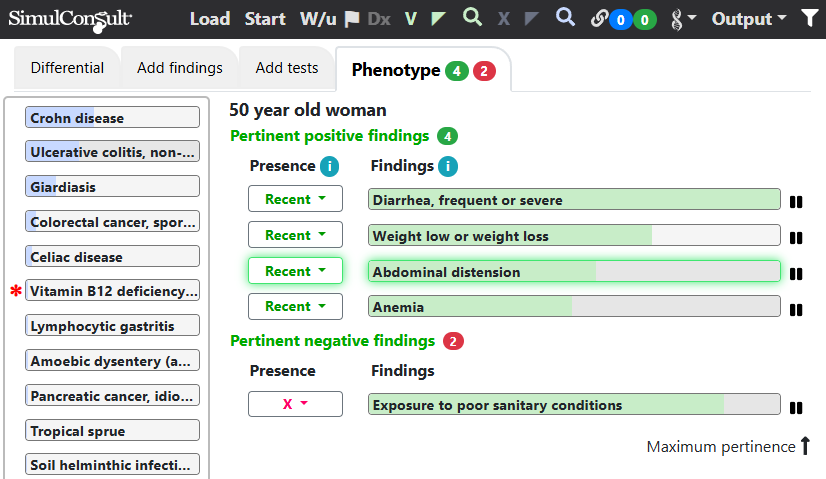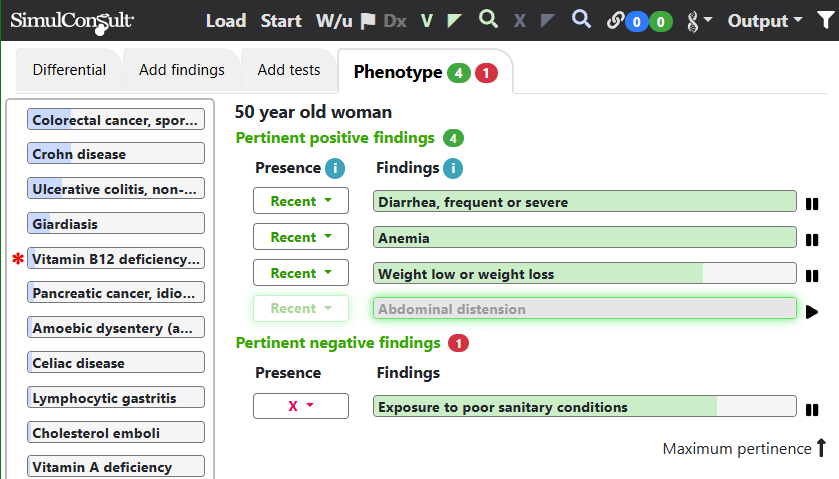The most difficult part of diagnosis is deciding which of a patient’s findings are in the “foreground” (part of the diagnosis being sought) versus the “background” (not related to the current diagnosis). This judgment depends on a variety of factors, including temporal association, knowledge of pathophysiology and interventions that have been done. Clinicians try to keep all the findings in mind and toggle which should be considered in the foreground for creating a differential diagnosis.
The diagnostic software assists in this process by giving you the ability to pause a finding using the standard pause symbol used for video or audio players, as shown in the image below. In this example, there is abdominal distension. When a finding is entered into the software it is assumed to be in the “foreground”. As seen below, with all findings in the foreground, the top two diseases in the differential diagnosis for this patient are forms of inflammatory bowel disease. (Users of the software can click the images to launch the software with the findings in the state shown).

If the abdominal distension might be in the “background”, you can click the pause symbol to the right of abdominal distension. The abdominal distension finding is then grayed out, its pertinence metric (green shading bar) is set to zero, and it is moved to the bottom of the list of findings, which is ranked by pertinence. The differential diagnosis then changes to rank higher the possibility of colorectal cancer, in which abdominal distension is less common.

One can restore abdominal distension to the foreground by clicking the play symbol to the right of abdominal distension.
The play / pause buttons are included on a variety of screens in the software. The Patient Summary output includes the background findings but grays them out and doesn’t use them. The SOAP note output omits all background information.
